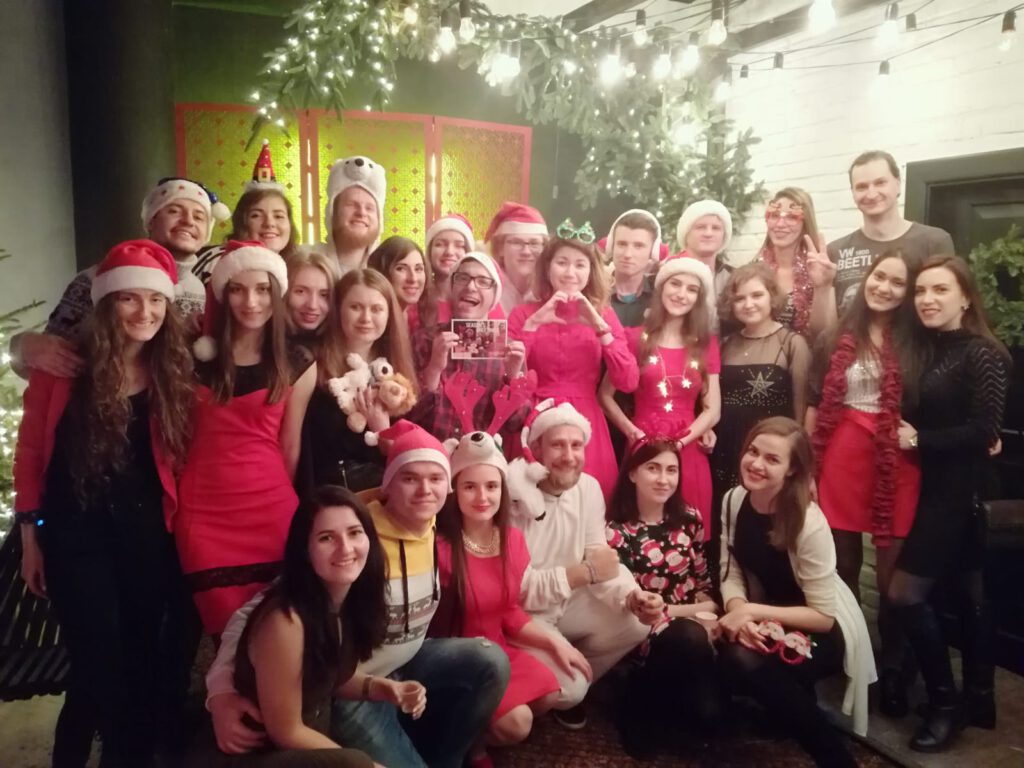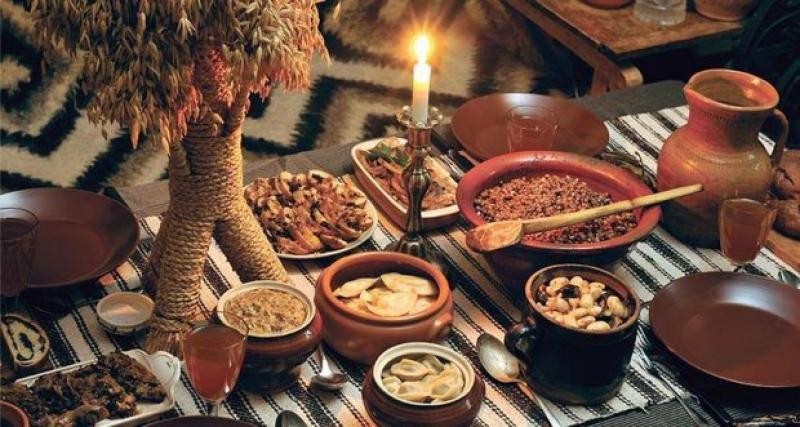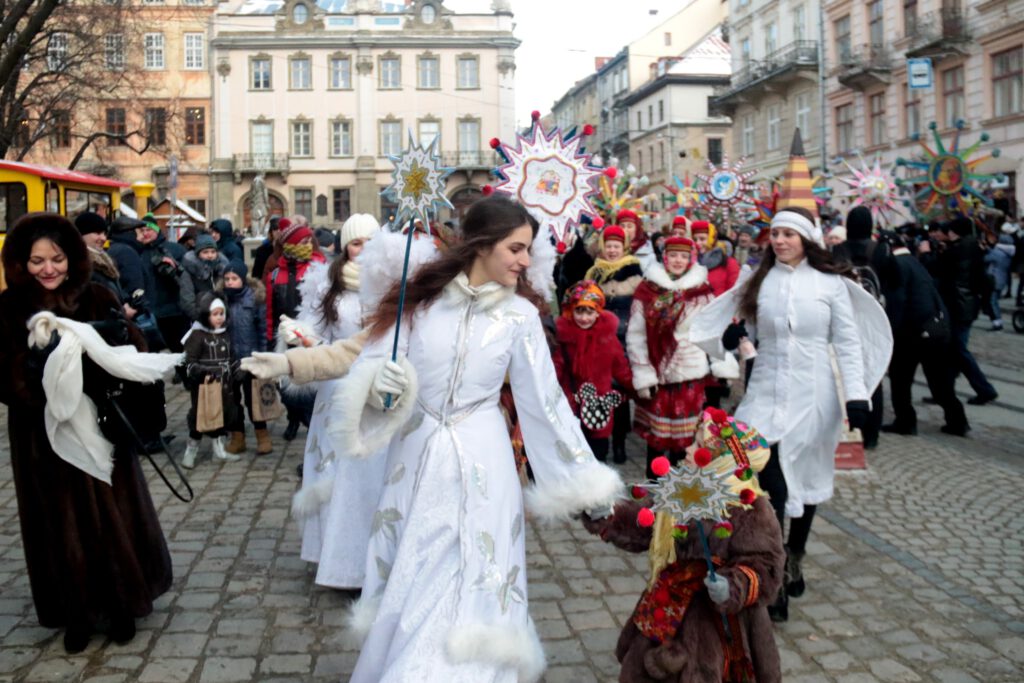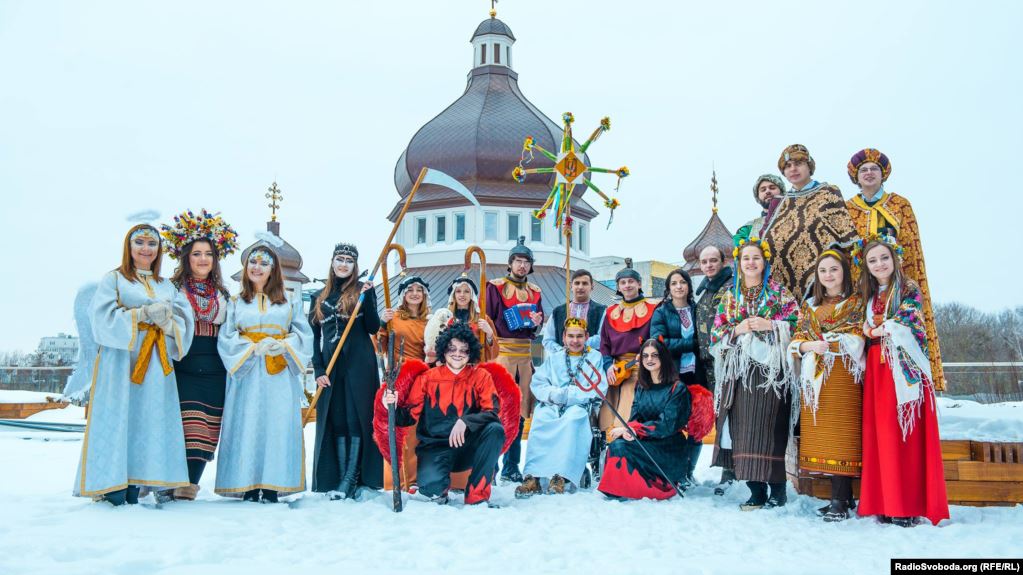“The fireplace is burning bright, shining along me
I see the presents underneath the good old Christmas tree
And I wait all night ’til Santa comes to wake me from my dreams
Oh, why? ‘Cause that’s Christmas to me” ~ Pentatonix
With the holidays right around the corner, The AEGEEan decided to have a glimpse into the holiday traditions in different parts of Europe. Surely, Europe, a land of diverse colourful cultures has some interesting holiday traditions and stories. So buckle up and as Frank Sinatra said, “Come fly with me, we’ll fly, we’ll fly away”. Next stop; Ukraine!

New Year and especially Christmas are the most popular holidays in Ukraine, both have a long history and a special set of traditions, all of which allow us to explore a unique Ukrainian culture. But when we say winter holidays, we do not mean just Christmas and New Year but a lot of other fests that last for more than a month, and we jokingly call this period “Ukrainian Ramadan”. It all starts on the 1st of December when we celebrate St. Roman day, and then comes St. Andrews day on the 13th of December. This day is considered to be a holiday of young men, because on St. Andrew’s night they were allowed to behave disgracefully. It was believed that girls could find out their fate at night, so the evening before girls would gather together late in the evening to do fortune-telling and to predict their future husbands. Meanwhile, boys would prank their beloved, the most hilarious being putting a plough on a house roof or taking a gate off its hinges and hiding it somewhere. Sounds funny, but in villages and small towns this tradition is still kept.
At the end of December It’s time to decorate the Christmas tree and buy presents to give one another. In Ukraine it’s not Santa Claus or Father Frost who gives presents, it’s Saint Nicolas. In some countries in Europe this day is celebrated through cultural and religious traditions on the 5th or 6th of December, in Western Ukraine St. Nicholas Day is on December 19.
New Year’s Day on January 1 marks the start of a new year according to the Gregorian calendar. While New Year’s Day is a public holiday on January 1, many Ukrainians still celebrate the “Old New Year”, which is on January 14 in the old Gregorian calendar. Ukrainians like to celebrate New Year’s Eve with friends and family, they often celebrate the New Year outdoors near the Christmas tree with sparkles of fireworks. Those who stay at home listen to the presidential speech and gather together by the table with special dishes such as Olivier salad and champagne.

Christmas celebration in Ukraine has a long history and a vivid set of traditions and rituals. Interesting fact: Ukraine celebrates two Christmases. How’s that you ask? Some Ukrainians (mostly in Western Ukraine) celebrate Christmas on December 25 in accordance with the Roman Catholic tradition (Gregorian Calendar), but still most of Ukraine celebrates Christmas on the 7th of January according to the Julian calendar. Traditional Ukrainian Christmas festivities begin on Christmas Eve and end on the Feast of the Epiphany. The Christmas Eve Supper or Holy Supper (Sviata Vecheria) brings the family together to partake in special foods and begins the holiday with many customs and traditions, which go back to ancient times.
The rituals of Christmas Eve are dedicated to God, to the welfare of the family, and to the remembrance of the ancestors. You can’t start eating the meal until the first star is seen in the sky. So people go outside as soon as it starts getting dark in the afternoon to try and spot the first star. The star represents the journey of the Wise Men to find Jesus, and Jesus has to be born so Christmas can start. The meal normally has 12 dishes that represent Jesus’ 12 disciples. Kutya is the most important Christmas dish in Ukraine, it’s cooked wheat porridge, mixed with poppy seeds, honey, raisins, and sometimes dried apricots or candied fruits. Other dishes are ‘borsch’ (traditional beet soup), ‘varenyky’ (dumplings) with potatoes and cheese, mushrooms, pickled herring and ‘kolach’ (special Christmas bread) and “pampukhy” for dessert – sweet dough donuts with jam or poppy seed filling.

Carol singing is an interesting and authentic Ukrainian tradition well preserved till today. It is still common for children to go from house to house and sing carols for family, friends, and even strangers. Some traditional Ukrainian carols became world-famous, for example, the Ukrainian “Shchedryk” is the basis for the Christmas carol, “Carol of the Bells“. Vertep, a Ukrainian Christmas theater, is a group of dressed-up people going from house to house presenting short scenes and carol singing, following old Ukrainian traditions. Usually, the scenes are Biblical themed and the most popular is about Christ’s birth but some of them can be really funny or even have a political implication. Vertep always carries a big, handmade, decorated star that represents a star that heralded the birth of Jesus.

Right before Epiphany Ukraine celebrates the second Holy Evening, called Generous. The table on this day should be really generous, according to the belief that the more generous and richer the table is, the happier and more successful will the next year be. In the festive menu, there must be pork dishes for the cattle to grow, and peace and mutual understanding prevail in the family. Epiphany, or Feast of Yordan happens on January 19 and completes the winter festivities cycle. It is a celebration of the baptism of Christ, all Churches have long services in the morning, and after the service the priests bless the water. On this day there is a tradition of dipping into the water, so many take a swim in the cold water. Since this particular day of the year is thought to be the coldest, the lakes and rivers are typically frozen over. In the morning volunteers cut an opening in the ice for people to sink into. The water is blessed by a priest, and the participants of the ceremony take a swim in the icy cold water. Amazingly, people hardly ever get sick after such a chilling experience. Some believe it’s a cleansing from sins and you can heal many illnesses by swimming in the river on this particularly holy day.
Ukraine has a long and complicated history of being subjugated by foreign powers. That explains why the traditions and customs in all parts of the country may differ. During the Soviet Union any religious and even traditional celebrations were prohibited. Nevertheless, our ancestors managed to remember and keep this important cultural heritage safe, and through all Ukrainian traditions, we can get a glimpse of a unique cultural identity that miraculously survived through many centuries.

